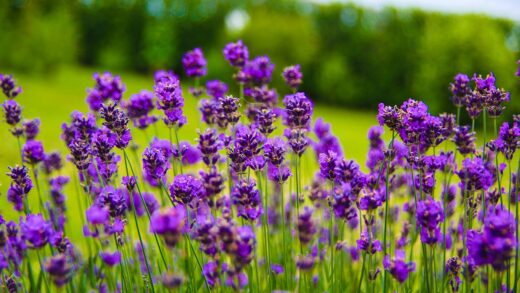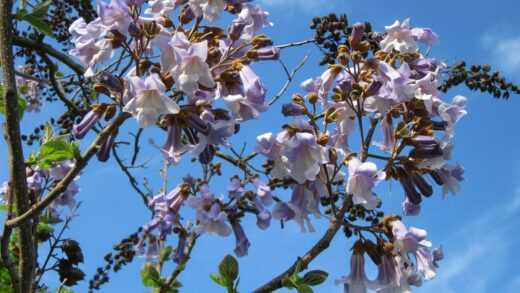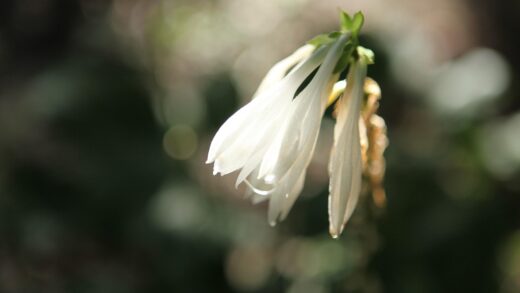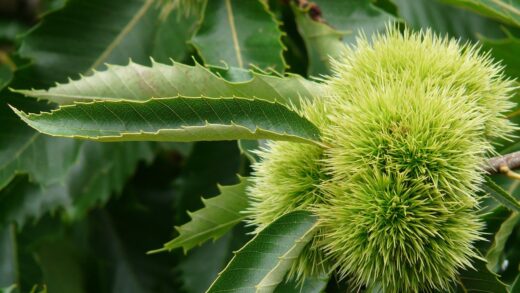The clusius-tulip, often celebrated for its elegant, slender form and striking coloration, is a species tulip that offers a more natural and perennial garden performance than its highly bred hybrid counterparts. Understanding its fundamental needs is the first step toward cultivating this botanical gem successfully. This tulip variety originates from mountainous regions, a background that dictates its preference for specific soil, water, and light conditions. Proper care ensures not only a vibrant spring display but also the long-term health and naturalization of the bulbs, allowing them to return year after year with increasing vigor. Providing the right environment from the outset minimizes future problems and maximizes the visual reward these unique flowers provide.
Caring for the clusius-tulip begins with appreciating its wild heritage, which makes it a resilient and relatively low-maintenance choice for the right garden setting. Unlike the more demanding hybrid tulips, this species thrives on a degree of benign neglect once established in a suitable location. The primary goal of ongoing care is to mimic the conditions of its native habitat, which typically involves a cycle of wet springs and dry summers. This cycle is crucial for the bulb’s life process, from flowering and foliage development to summer dormancy. Adhering to this natural rhythm is more important than frequent intervention, making it an excellent choice for gardeners seeking sustainable and enduring beauty.
The long-term success of these tulips also hinges on what happens after the flowers have faded, a critical period for the bulb. During this post-blooming phase, the foliage must be allowed to yellow and die back naturally, as this is when the plant photosynthesizes and sends energy back down to the bulb for the following year’s display. Cutting the leaves back prematurely for aesthetic reasons is a common mistake that will significantly weaken the bulb and reduce or eliminate future flowering. Patience during this period is a key aspect of proper care, ensuring the bulb has sufficient resources to survive dormancy and thrive in the next growing season.
Finally, routine observation plays a significant role in the ongoing care of the clusius-tulip. Regularly inspecting the plants for any signs of stress, disease, or pest activity allows for early intervention before problems become widespread. This includes checking for discoloration of the leaves, stunted growth, or the presence of common pests like aphids. While generally robust, being proactive about potential issues ensures the health of the tulip colony. This mindful approach to gardening, combining an understanding of the plant’s needs with regular monitoring, is the foundation of successful and rewarding cultivation.
Understanding the soil requirements
The foundation of successful clusius-tulip cultivation lies in providing the correct soil environment, which is arguably the most critical factor in its long-term health. These tulips demand exceptionally well-draining soil, a non-negotiable requirement stemming from their origin in the rocky, gravelly slopes of mountainous regions. Waterlogged or heavy clay soils are detrimental, as they can lead to bulb rot, particularly during their summer dormancy period when they require dry conditions. The ideal soil structure should be loose and friable, allowing water to percolate through quickly while still retaining enough moisture to support growth during the spring.
More articles on this topic
To create the perfect growing medium, amending existing garden soil is often necessary, especially in areas with heavy clay or poor drainage. Incorporating generous amounts of coarse sand, fine gravel, or perlite will significantly improve the soil’s porosity and structure. Organic matter, such as fully composted leaf mold or well-rotted manure, can also be beneficial, but it should be used judiciously. The goal is to improve drainage and provide modest fertility without creating a soil that is overly rich or moisture-retentive, which could compromise the bulbs’ health over time.
The soil’s pH level is another important consideration for the optimal growth of the clusius-tulip. These tulips generally prefer a neutral to slightly alkaline soil, with a pH ranging from 6.6 to 7.5. Before planting, it is wise to test the soil’s pH to determine if any adjustments are needed. If the soil is too acidic, it can be amended with horticultural lime or wood ash to raise the pH to a more suitable level. This simple step can make a significant difference in the plant’s ability to absorb nutrients and thrive.
Furthermore, when planting clusius-tulips in containers or raised beds, the choice of growing medium is entirely within the gardener’s control, making it easier to meet their specific needs. A high-quality potting mix designed for cacti or succulents can be an excellent base, as it is formulated for sharp drainage. Alternatively, a custom mix can be created by combining standard potting soil with equal parts coarse sand and perlite. This ensures that the bulbs are not sitting in stagnant water, replicating the well-drained conditions they cherish and setting the stage for a successful display.
Sunlight and location considerations
Selecting the right location is paramount for the clusius-tulip, as its performance is directly linked to the amount of sunlight it receives. These tulips flourish in a position that receives full sun, especially during their spring growing season. Ample sunlight fuels the process of photosynthesis, which is essential for producing strong stems, vibrant flowers, and, most importantly, for replenishing the energy reserves within the bulb for the subsequent year. A location that offers at least six to eight hours of direct sunlight per day is ideal for achieving the best possible flowering display and promoting long-term vigor.
More articles on this topic
While full sun is the general rule, the specific climate can influence the ideal placement. In cooler, more northern climates, planting in the sunniest, most open part of the garden is crucial. However, in regions with intensely hot and powerful spring sun, a location that provides some light afternoon shade can be beneficial. This can help to prolong the life of the delicate flowers and prevent the petals from scorching, allowing for a longer period of enjoyment. The key is to ensure they receive plenty of direct morning and midday sun, which is cooler yet still powerful enough for robust growth.
The chosen location must also provide the necessary conditions for the bulb’s summer dormancy period. After the foliage dies back, the bulbs require a period of warmth and dryness to mature properly underground. A spot that bakes in the summer sun is therefore highly advantageous. This is why clusius-tulips are exceptionally well-suited for rock gardens, gravel beds, or south-facing slopes, as these areas naturally provide the sharp drainage and summer heat that mimic their native environment and protect the dormant bulbs from rot.
When considering companion plants, it is important to choose neighbors that will not overshadow the tulips during their spring growth phase. Low-growing, drought-tolerant perennials or groundcovers that also thrive in sunny, well-drained conditions make excellent partners. These companion plants can help to suppress weeds and create a more naturalistic planting scheme, but they should have root systems that do not compete aggressively with the tulip bulbs for water and nutrients. Proper site selection, therefore, involves a holistic assessment of sunlight, soil, and neighboring plants.
Post-flowering care and maintenance
The period immediately following the bloom of the clusius-tulip is a critical phase in its annual life cycle, and the care provided during this time directly impacts the following year’s performance. The primary task for the gardener is to allow the foliage to remain on the plant until it has completely yellowed and withered on its own. Although the fading leaves may look untidy, they are working hard, absorbing sunlight and creating the food reserves that are stored in the bulb for survival and future flowering. Cutting this foliage back prematurely is one of the most detrimental things one can do, as it effectively starves the bulb.
During this foliage maturation period, which can last for several weeks, it is important to continue providing adequate moisture if the spring is particularly dry, but one should begin to taper off watering as the leaves start to yellow. This signals to the bulb that its dormant period is approaching. As the foliage dies back, the plant naturally requires less water, and reducing irrigation helps to initiate the dry summer conditions that the bulbs need. This gradual transition from a moist spring to a dry summer is key to preventing bulb rot and ensuring a healthy dormancy.
Once the foliage has completely dried and can be pulled away from the ground with a gentle tug, it can be removed and composted. This tidies up the garden bed and removes any potential habitat for pests or diseases. At this point, all supplemental watering should cease for the remainder of the summer. The bulbs are now dormant and are best left in warm, dry soil. This period of baking in the sun is essential for the development of the following year’s flower bud within the bulb.
It is also during this post-flowering period that one might consider applying a light dressing of a suitable fertilizer. If fertilization is deemed necessary, a low-nitrogen, high-potassium formula, such as a bone meal or a specialized bulb food, should be applied as the flowers are fading. This provides the bulb with the specific nutrients it needs to build up its reserves. However, if the soil is reasonably fertile to begin with, the clusius-tulip often performs perfectly well without any supplemental feeding, underscoring its low-maintenance nature.
Managing pests and diseases
While the clusius-tulip is a relatively robust and trouble-free plant, it is not entirely immune to pests and diseases that can affect tulips. Proactive management and good cultural practices are the best defense against potential problems, ensuring the long-term health of the bulb colony. One of the most common issues affecting tulips is tulip fire, a fungal disease caused by Botrytis tulipae. This disease manifests as distorted or twisted shoots, spotted petals, and withered foliage, and it thrives in cool, damp spring weather.
Preventing tulip fire begins with sourcing high-quality, disease-free bulbs and planting them in a location with excellent air circulation. Avoiding overcrowding allows air to move freely around the plants, which helps the foliage to dry quickly after rain and reduces the likelihood of fungal spores taking hold. If signs of tulip fire do appear, it is crucial to remove and destroy any affected plants immediately to prevent the disease from spreading to healthy neighbors. In subsequent years, it is advisable to rotate the planting location, as the fungal spores can persist in the soil.
Rodents such as squirrels, voles, and mice can also pose a significant threat, as they are known to dig up and consume tulip bulbs. This is particularly a problem in the autumn shortly after planting and during the winter months when other food sources are scarce. To protect the bulbs, one can plant them in wire cages or surround the planting area with a layer of sharp gravel or crushed oyster shells, which can deter digging. Planting the bulbs at the correct, deeper depth can also make them less accessible to these hungry critters.
Aphids are another potential pest that may appear on the tender new growth in the spring. While a small infestation is unlikely to cause significant harm, large populations can weaken the plant and may transmit viruses. Aphids can often be controlled by simply spraying them off with a strong jet of water from a hose. For more persistent problems, insecticidal soap can be an effective and environmentally friendly solution. Encouraging natural predators like ladybugs and lacewings into the garden will also help to keep aphid populations in check.
Long-term care and naturalizing
The clusius-tulip is an excellent candidate for naturalizing, meaning it can be left in the ground to multiply and spread over the years, creating increasingly beautiful drifts of color. The key to successful naturalizing is providing the ideal growing conditions from the very beginning, particularly the well-drained soil and dry summer dormancy that have been emphasized. When these conditions are met, the mother bulbs will produce offset bulblets, which will mature over time and develop into new, flowering plants, gradually expanding the colony.
To encourage this process, it is important to minimize disturbance to the area where the tulips are planted. Avoid deep cultivation or digging in the bed during the summer and autumn when the bulbs are dormant and invisible beneath the soil surface. Planting them among low-growing, non-invasive groundcovers can help to mark the area and prevent accidental disturbance. This patient, hands-off approach allows the bulbs to establish a strong, interconnected network underground.
Over time, typically after several years, a naturalized colony may become overcrowded, which can lead to a decrease in flowering as the bulbs compete for resources. If you notice that the display is becoming less vigorous, it may be time to lift and divide the bulbs. The best time to do this is in the late summer or early autumn, after the bulbs have completed their dormancy but before they begin to put down new roots. Carefully dig up the clumps, separate the individual bulbs and offsets, and replant them immediately with adequate spacing.
Ultimately, the long-term care of a naturalized clusius-tulip planting is about maintaining the balance of the ecosystem you have created. This involves ensuring the site remains sunny and is not encroached upon by larger, more aggressive plants. It also means continuing to provide the dry summer conditions they need, which may involve diverting excess water from irrigation systems watering thirstier, nearby plants. With this thoughtful and minimalistic approach, a planting of clusius-tulips can become a cherished and self-sustaining feature of the spring garden for many years to come.




















